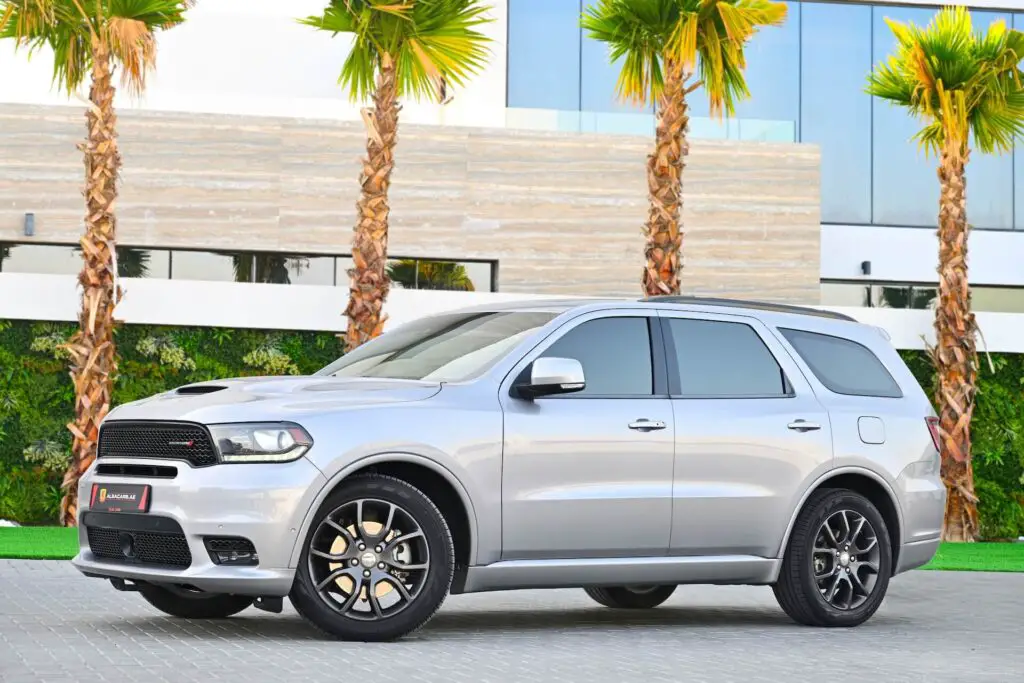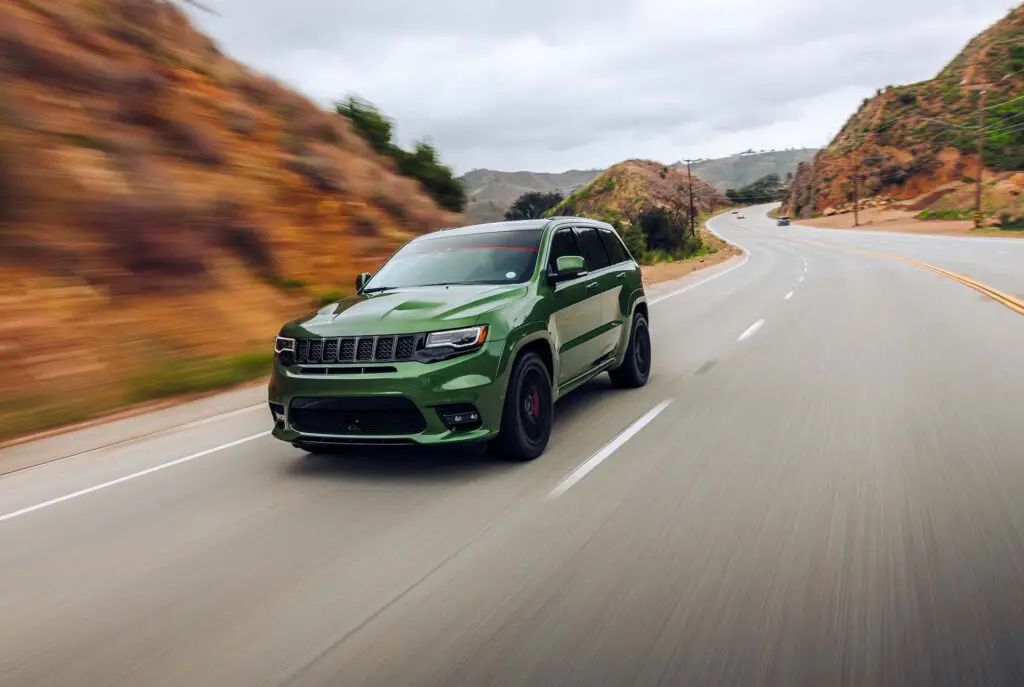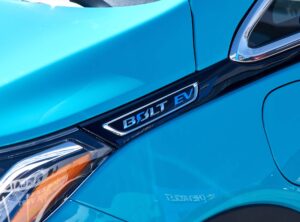In the world of automotive aficionados, there are a few debates that rev up conversations as quickly as the battle of Dodge Durango vs. Jeep Grand Cherokee. These two iconic SUVs, each boasting a unique blend of power, luxury, and style, are often pitted against each other. So, let’s put these legends to the ultimate test, comparing performance, comfort, safety, and more. Buckle up – it’s going to be an exciting ride!
These mid-size SUVs might not look like it, but they’re pretty similar. Both sport a standard 3.6L V6 engine and comparable infotainment features. The only notable difference is that the Durango offers standard three-row seating and superior towing capacity. On the flip side, the Grand Cherokee shines with a more contemporary interior and enhanced storage options.
Both Four-Wheelers Are a Popular Choice in the Growing Market of Mid-Size SUVs
The category of mid-size SUVs has been on a steady rise when it comes to automotive trends. Both of these models have successfully carved a niche for themselves, offering an enviable mix of family-friendly utility and off-road capabilities under the glossy exterior.
Spacious interiors, top-tier technology, and all of that towing power echo the desires of most modern drivers. Luckily, both car manufacturers are well aware of this fact, and they’re keeping up with the vehicle evolution to bring their best each model year. But before we get into the details, let’s take a glimpse at how we got here.
The Jeep Grand Cherokee Has Been the Brand’s Flagship for Decades Now
When it comes to the Jeepster, the journey began in 1983 when American Motors Corporation (AMC) embarked on a mission to develop a successor to the compact XJ model. Chrysler took over AMC a few years later, marking the birth of the first Jeep to bear the Chrysler emblem.
This vehicle was conceived to be a strong competitor to the Ford Explorer, but it boasted a distinct feature – a unibody design. Finally, the four-wheeler made its official debut in 1992 and has been a notable pick from the brand for three decades now. For the ongoing fifth generation, there are plenty of trim levels to choose from:
- Laredo,
- Altitude,
- Limited,
- Trailhawk,
- Overland,
- Summit,
- Summit Reserve.
The Dodge Durango Might Be Younger but It’s Still a Classic
The Durango made its debut in the automotive world a bit later, with its inception marking the 1998 model year. It has since evolved through three distinct generations. Interestingly, the latest generation models share the Cherokee’s unibody design, which might be a standard for crossovers but not the norm for the SUV category.
Since late 2010, this iconic vehicle has been crafted at the Jefferson North Assembly Plant in Detroit, Michigan. Here are the trim levels available for the recent model years:
- SXT,
- GT,
- GT Plus,
- R/T,
- Citadel,
- R/T Plus,
- SRT 392.

A Classic Feel or a More Contemporary Look – It Comes Down to Personal Preferences
When it comes to exterior design, personal taste always takes center stage. The Durango is like a well-aged wine, maintaining its iconic look with few drastic changes over the years. While some might find that the design is outdated, it definitely has a unique charm that’s made it a familiar sight on famous US routes.
On the other hand, its Jeep contender underwent a complete makeover for the 2022 model year. Ever since then, the four-wheeler has been stepping into the limelight with a refreshed, contemporary allure.
The Dodge Sticks to Its Recognizable Exterior Design
Dodge’s distinct proportions, adorned with notable ground clearance, high-beam LED headlights, and its signature racetrack tail lights set it apart from the competition. This four-wheeler doesn’t just make a clear statement on the road – it’s open for customization, from the wide range of available trims to plenty of enhancements.
The Jeep Offers a More Modern Appearance
In contrast, the Jeepster exudes a modern flair, marked by its elegant yet bold exterior features. The iconic seven-slot grille remains a centerpiece, skillfully balanced in size to complement the SUV’s broad, square body.
Slim LED headlights and daytime running lights come standard, casting a bright, clear light on the road ahead when driving at night. For those seeking an added touch of luxury, choosing the higher trim levels offers plenty of upgrades.

Dodge Durango vs. Jeep Grand Cherokee – A Detailed Interior and Size Comparison
When we step inside, the Grand Cherokee boasts a great interior build, with plenty of high-quality materials. The upscale trims showcase even more luxury with leather upholstery, wood inserts, and contrast stitching.
In contrast, the base SXT Durango uses simpler materials and hard plastics, but it maintains a level of quality that doesn’t compromise the overall aesthetic appeal. The Citadel trim transforms the interior with Nappa leather upholstery, heated seating, and an array of additional features.
Now, let’s compare the dimensions of these iconic mid-size SUVs:
| Measurement | 2023 Dodge Durango | 2023 Jeep Grand Cherokee |
| Length | 200.8 in | 193.5 in |
| Height | 72.1 in | 70.8 in |
| Ground Clearance | 8.1 in | 8.4 in |
| Width | 75.8 in | 77.5 in |
| Wheelbase | 119.8 in | 116.7 in |
| Seating Capacity | 7 | 5 |
| Cargo Space | 17.2 cu/ft | 37.7 cu/ft |
*For the metric system, an inch is 25.4 mm
The Durango Offers Three-Row Seating as Standard
While the Jeepster provides options for both two and three-row seating arrangements with the inclusion of the Grand Cherokee L, the Durango takes the top spot when it comes to passenger comfort. This mid-size SUV offers three rows as standard and over 50 potential seating configurations.
The Cherokee Has More Trunk Area but the Dodge Offers Huge Cargo Space With the Seats Down
The Grand Cherokee boasts a spacious trunk area, offering 37.7 cu/ft for the convenient stowing of luggage and equipment. Compared to that, the Dodge, with a cargo capacity of only 17.2 cu/ft, seems underwhelming. However, you have to remember that the three-row design unveils substantial cargo space when the seats are folded. To be exact, with both the second and third row out of the equation, it offers up to 85.1 cu/ft of space.

Grand Cherokee vs. Durango – What Infotainment Features Are Offered as Standard?
Now that we’re inside, let’s focus on infotainment, which enriches the driving experience with comfort and convenience. Both of these mid-size SUVs offer a generous array of standard features. Plus, they’re pretty comparable in this department across all trim levels. Let’s take a look at what you can expect from each at the base model.
The Jeep’s Standard Infotainment Features
The Grand Cherokee isn’t just about power and performance – it’s equally committed to ensuring an engaging and entertaining ride. Here are the features that come as a standard:
- An 8.4-inch touchscreen display,
- Apple CarPlay,
- Android Auto,
- Bluetooth,
- A Wi-Fi hotspot,
- Two USB ports,
- A six-speaker stereo.
The Durango’s Standard Infotainment Features
On the other hand, the Dodge also meets the modern driver’s needs with its own ensemble of standard tech features:
- An 8.4-inch touchscreen display,
- Apple CarPlay,
- Android Auto,
- Bluetooth,
- Four USB ports,
- A six-speaker radio,
- Satellite radio.

Jeep Grand Cherokee vs. Dodge Durango – Which Vehicle Is the More Reliable Choice?
Both mid-size SUVs are equipped with a range of safety features, including blind-spot monitoring, parking sensors, and adaptive cruise control. For the 2023 Grand Cherokee, we are still anticipating a comprehensive safety test. However, the results seem promising, given that its predecessor received a 5-star rating from the National Highway Traffic Safety Administration (NHTSA).
On the other hand, the 2023 Durango has earned a commendable four out of five stars in overall safety from the NHTSA. All in all, both four-wheelers can be considered pretty reliable, which is always a crucial aspect, especially when you’re looking for a family car.
Durango vs. Grand Cherokee – Power, Towing, and Fuel Economy
Now, let’s get to the real deal – the performance nuances of these mid-size SUVs. Before we get into any more detail, here’s an overview of the main specifications:
| Specification | 2023 Dodge Durango | 2023 Jeep Grand Cherokee |
| Type of Engine | 3.6L 6-cyl | 3.6L 6-cyl |
| Power | 293 hp at 6,400 rpm | 293 hp at 6,400 rpm |
| Torque | 260 lb/ft at 4,000 rpm | 260 lb/ft at 4,000 rpm |
| Drivetrain | Four-wheel drive (4WD) | Rear-wheel drive (RWD) |
| Transmission | 8-speed shiftable automatic (8A) | 8-speed shiftable automatic (8A) |
| Fuel Economy | 19/26/21 MPG | 19/26/22 MPG |
Let’s explain what all of this means:
Engine Power
Equipped with a standard 3.6L V6 engine, both of these vehicles boast 293 hp and 260 hp/ft of torque, demonstrating a balanced blend of power and efficiency. For those craving more, both SUVs offer an upgrade to the potent 5.7L Hemi V8 engine, unleashing approximately 360 hp and 390 lb/ft of torque. This powerhouse is accessible in specific trims, including the Durango R/T and Citadel, and select versions of the 3-row Grand Cherokee L.
Towing Capacity
For many, the decision to opt for an SUV is anchored in the vehicle’s towing prowess. The Cherokee has a towing capacity of up to 6,200 lbs across most of its models, with the Trailhawk and Summit Reserve stretching their muscles to pull 7,200 lbs.
In contrast, the Dodge flexes its superior towing muscle, boasting a range of 6,200 lbs to a formidable 8,700 lbs, depending on the chosen trim. Either way, you’ll definitely end up with a vehicle able to haul a small camper, boat, or other heavy loads.
Fuel Economy
When it comes to fuel efficiency, the playing field levels out. Both the Durango and Grand Cherokee offer 19 MPG in the city and 26 MPG on the highway. These comparable fuel economy metrics are the same across their various engine configurations.
Which Mid-Size SUV Is the More Budget-Friendly Choice?
With the high car prices these days, it’s no surprise that the budget is one of the most important aspects drivers are concerned about when buying a new four-wheeler. At a glance, budget-conscious buyers might lean towards the Durango, with its starting price of $39,000. It seems like this iconic vehicle offers a more economical entry point compared to the Cherokee’s initial price tag of $41,500.
However, it all comes down to the exact trim level you’re going for, with some Dodge trims having a higher starting price than the Jeepster. At the end of the day, the final budgetary impact is intricately linked to each buyer’s customized choices.

You’ll Find Your Perfect Fit by Considering the Nuances
In this grand showdown, it’s evident that these four-wheelers aren’t exactly cut from the same cloth, but they share more than a few familiar traits. Therefore, it’s those little nuances and subtle distinctions that will make all the difference. Whether it’s the Durango’s knack for towing or the Grand Cherokee’s refined elegance, paying attention to the finer details will be your golden ticket to picking the SUV that’s just the right fit for your vibes, needs, and wants.








